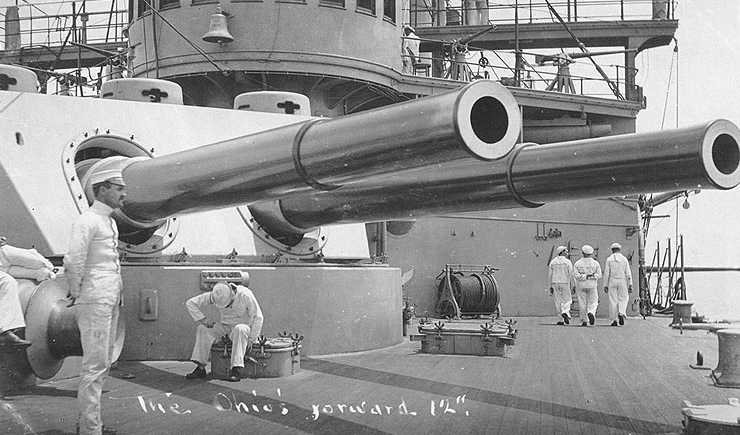|
In the case of the USN, the development of smokeless powder led to a new generation of long-barrel naval guns, including the 12"/40 (30.5 cm). This gun was used on several pre-dreadnoughts and monitors. The early guns suffered from excessive bore erosion, necessitating a reduction in the propellant charge to lower the muzzle velocity. Perhaps the most interesting use of this weapon was on the two-level, dual-caliber turrets that were unique to the US Navy. The concept behind these mountings was that the large caliber weapons fired slowly, perhaps once every ninety seconds while the 8"/45 (20.3 cm) guns fired about three times as fast. That meant that the smaller guns could fire one or two shots at a second target while the larger guns were reloading. Unfortunately for this design, better crew training and more careful attention to details led to a rapid improvement in the rate of fire for large caliber weapons, eliminating the advantage of the smaller guns over the larger ones. As a result, the dual-caliber turrets could really only fire at a single target and the smoke from both calibers interferred with sighting unless they were both fired together. In 1908 AP projectiles were fitted with a longer ballistic cap of 7crh which improved their penetration ability at longer ranges. Mark 3 consisted of A tube, jacket and eight hoops. The Mark 4 was very similar with a smaller chamber for the reduced propellant charge. |

Forward turret of USS Ohio B-12 about 1907
|
| .
|